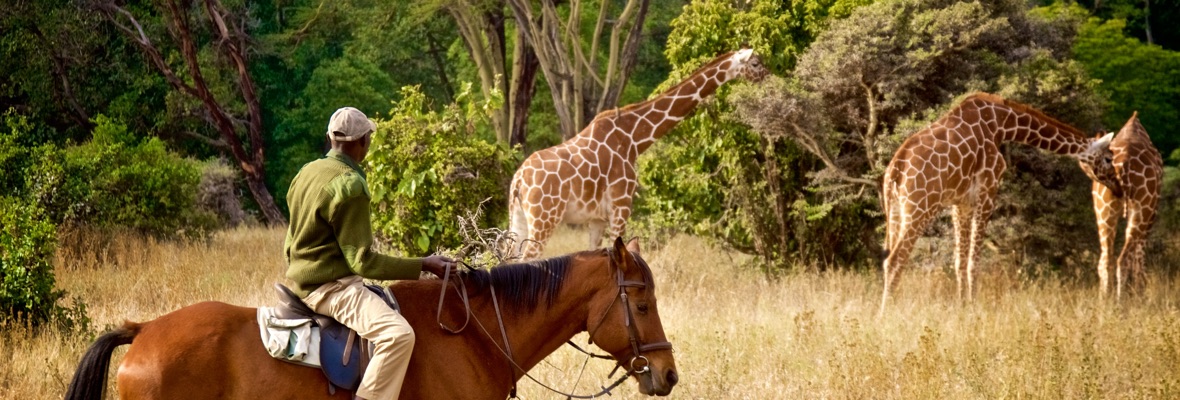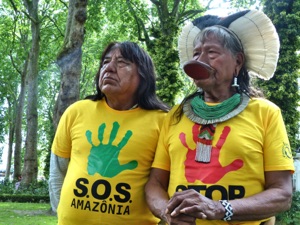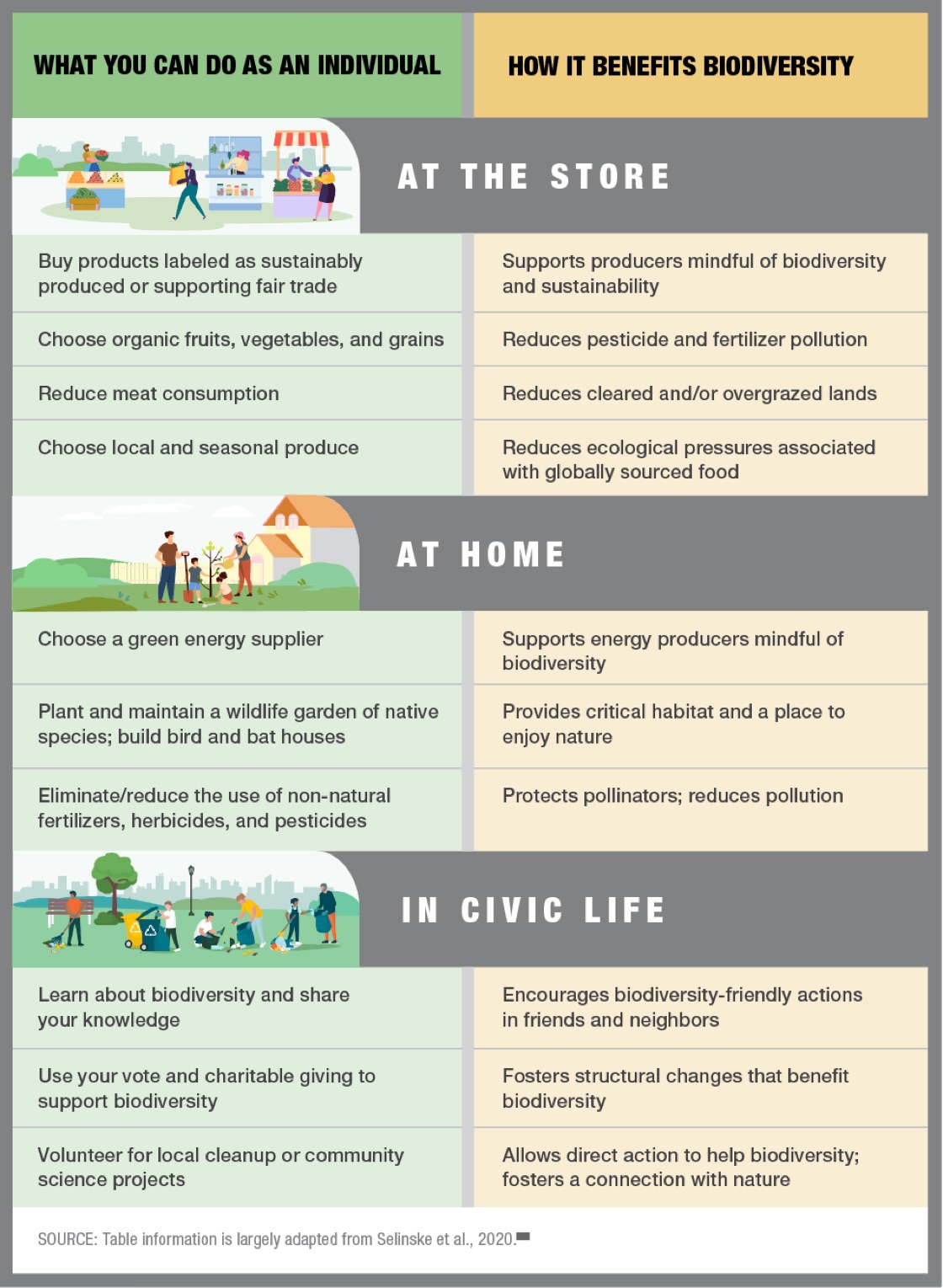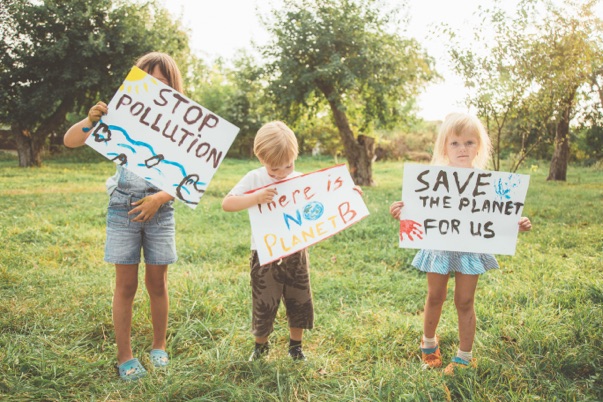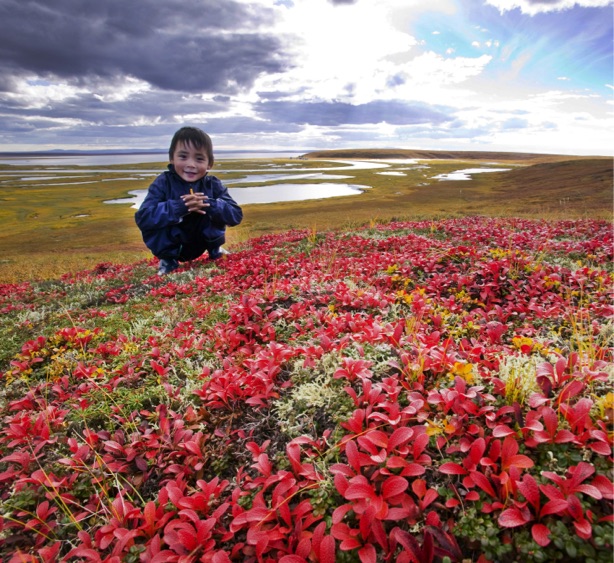ENDNOTES
1 Dodd, M. S., D.
Papineau, T. Greene, J. F. Slack, M. Rittner, F. Pirajno, J. O’Neil, and C. T.
S. Little. 2017. Evidence for early life in Earth’s oldest hydrothermal vent
precipitates. Nature 543(7643):60–64.
2 Intergovernmental
Science-Policy Platform on Biodiversity and Ecosystem Services. 2019. Summary for Policymakers
of the Global Assessment Report on Biodiversity and Ecosystem Services, edited
by S. Díaz, J. Settele, E. S. Brondízio, H. T. Ngo, M. Guèze, J. Agard, A.
Arneth, P. Balvanera, K. A. Brauman, S. H. M. Butchart, K. M. A. Chan, L. A.
Garibaldi, K. Ichii, J. Liu, S. M. Subramanian, G. F. Midgley, P. Miloslavich,
Z. Molnár, D. Obura, A. Pfaff, S. Polasky, A. Purvis,
J. Razzaque, B. Reyers, R. Roy Chowdhury, Y. J. Shin, I. J. Visseren-Hamakers,
K. J. Willis, and C. N. Zayas. Bonn,
Germany: IPBES Secretariat.
3 United Nations
Environment Programme. 2021. State of Finance for Nature. Nairobi, Kenya:
United Nations Environment Programme, World Economic Forum, The Economics of
Land Degradation, and Vivid Economics.
4 Díaz, S., J. Settele,
E. S. Brondízio, H. T. Ngo, J. Agard, A. Arneth, P. Balvanera, K. A. Brauman,
S. H. M. Butchart, K. M.
A. Chan, L. A. Garibaldi, K. Ichii, J. Liu, S. M. Subramanian, G. F. Midgley,
P. Miloslavich, Z. Molnár, D. Obura, A. Pfaff, S. Polasky, A. Purvis, J.
Razzaque, B. Reyers, R. Roy Chowdhury, Y. J. Shin, I. J. Visseren-Hamakers, K.
J. Willis, and C.N. Zayas. 2019. Pervasive human-driven decline of life on
Earth points to the need for transformative change. Science 366(6471):eaax3100.
5 Smithsonian National
Museum of Natural History. n.d. Early life on Earth—animal origins. Smithsonian. Available
at:
https://naturalhistory.si.edu/education/teaching-resources/life-science/early-life-earth-animal-origins.
6 Barnosky, A., N.
Matzke, S. Tomiya, G. O. U. Wogan, B. Swartz, T. B. Quental, C. Marshall, J. L.
McGuire, E. L. Lindsey, K. C. Maguire, B. Mersey, and E. A. Ferrer. 2011. Has
the Earth’s sixth mass extinction already arrived? Nature 471:51–57.
7 Brody, H. 2020. The gut
microbiome. Nature 577:S5.
8 Unsworth, R. K. F., and
L. C. Cullen-Unsworth. 2014. Biodiversity, ecosystem services, and the
conservation of seagrass meadows. In Coastal Conservation (Conservation
Biology), edited by B. Maslo and J. Lockwood. Cambridge, UK: Cambridge
University Press. DOI: 10.1017/CBO9781139137089.
9
Vale,
C. G., S. L. Pimm, and J. C. Brito. 2015. Overlooked mountain rock pools in
deserts are critical local hotspots of biodiversity. PLOS ONE 10(2):e0118367.
10 Hui, D. 2012. Food web:
Concept and applications. Nature Education Knowledge 3(12):6.
11 Simard, S. W., D. A.
Perry, M. D. Jones, D. D. Myrold, D. M. Durall, and R. Molina. 1997. Net
transfer of carbon between ectomycorrhizal tree species in the field. Nature
388:579–582.
12 Ripple, W. J., J. A.
Estes, and C. C. Wilmers. 2014. Status and ecological effects of the world’s
largest carnivores. Science 343(6167):1241484.
13 Beschta, R., and W. J.
Ripple. 2009. Large predators and trophic cascades in terrestrial ecosystems of
the western United States. Biological Conservation 142(11):2401–2414.
14 Vidal, J. 2019. Why
Indigenous peoples and traditional knowledge are vital to protecting future
global biodiversity. Ensia, November 13. Available at:
https://ensia.com/features/indigenous-knowledge-biodiversity.
15 Francis, I. 2015.
Encyclical letter Laudato Si’ of the Holy Father Francis, on care for our
common home. The Holy See, May 24. Available at:
https://www.vatican.va/content/francesco/en/encyclicals/documents/papa-francesco_
20150524_enciclica-laudato-si.html.
16 Barnhill, D. L., and R.
S. Gottlieb. 2001. Deep Ecology and World Religions: New Essays on Sacred
Ground. Albany, NY: SUNY Press.
17 See
https://www.inaturalist.org.
18 Catalogue of Life.
2020. Catalogue of life. Species 2000. Available at:
https://www.catalogueoflife.org.
19 Dasgupta, P. 2021. The
Economics of Biodiversity: The Dasgupta Review. London, UK: HM Treasury.
20 Bar-On, Y. M., R. Phillips, and R.
Milo. 2018. The biomass distribution on Earth. Proceedings of the National
Academy of
Sciences 115(25):6506–6511.
21 Hartop, E., B. Brown,
and R. H. Disney. 2016. Flies from L.A., the sequel: A further twelve new
species of Megaselia (Diptera: Phoridae) from the BioSCAN Project in Los
Angeles (California, USA). Biodiversity Data Journal 4:e7756.
22 Fritz-Vietta, N. V. M.,
H. B. Ferguson, and J. U. Stoll-Kleemann, Ganzhorn. 2011. Conservation in a Biodiversity Hotspot:
Insights from Cultural and Community Perspectives in Madagascar in Biodiversity
Hotspots, edited by F. E. Zachos and J. C. Habel. Berlin/Heidelberg, Germany:
Springer-Verlag.
23 Chapman, A. D. 2009.
Numbers of Living Species in Australia and the World: Report for the Australian
Biological Resources Study. Available at: https://www.awe.gov.au/sites/default/files/env/pages/2ee3f4a1-f130-465b-9c7a-79373680a067/files/nlsaw-2nd-complete.pdf.
24 Intergovernmental
Science-Policy Platform on Biodiversity and Ecosystem Services. 2019. Summary
for Policymakers of the Global Assessment Report on Biodiversity and Ecosystem
Services, edited by S. Díaz, J. Settele, E. S. Brondízio, H. T. Ngo, M. Guèze,
J. Agard, A. Arneth, P. Balvanera, K. A. Brauman, S. H. M. Butchart, K. M. A.
Chan,
L. A. Garibaldi, K. Ichii, J. Liu, S. M. Subramanian, G. F. Midgley, P.
Miloslavich, Z. Molnár, D. Obura, A. Pfaff, S. Polasky, A. Purvis, J. Razzaque,
B. Reyers, R. Roy Chowdhury, Y. J. Shin, I. J. Visseren-Hamakers, K. J. Willis,
and
C. N. Zayas. Bonn, Germany: IPBES Secretariat.
25 Falkowski, P. 2012.
Ocean science: The power of plankton. Nature 483:S17–S20.
https://doi.org/10.1038/483S17a.
26 Pepper, R., M. Roper,
S. Ryu, N. Matsumoto, M. Nagai, and H. Stone. 2013. A new angle on microscopic
suspension feeders near boundaries. Biophysical Journal 105(8):1796–1804.
27 Intergovernmental
Science-Policy Platform on Biodiversity and Ecosystem Services. 2019. Summary
for Policymakers of the Global Assessment Report on Biodiversity and Ecosystem
Services, edited by S. Díaz, J. Settele, E. S. Brondízio, H. T. Ngo, M. Guèze,
J. Agard, A. Arneth, P. Balvanera, K. A. Brauman, S. H. M. Butchart, K. M. A.
Chan, L. A. Garibaldi, K. Ichii, J. Liu, S. M. Subramanian, G. F. Midgley, P.
Miloslavich, Z. Molnár, D. Obura, A. Pfaff, S. Polasky, A. Purvis, J. Razzaque,
B. Reyers, R. Roy Chowdhury, Y. J. Shin, I. J. Visseren-Hamakers, K. J. Willis,
and C. N. Zayas. Bonn, Germany: IPBES Secretariat.
28 Food and Agriculture
Organization of the United Nations. 2014. The State of World Fisheries and
Aquaculture: Opportunities and Challenges. Rome, Italy: Food and Agriculture
Organization of the United Nations.
29 Haahtela, T., L. von Hertzen, J. M.
Anto, C. Bai, A. Baigenzhin, E. D. Bateman, D. Behera, K. Bennoor, P. Camargos,
N. Chavannes, J. Correia de Sousa, A. Cruz, M. Do Céu Teixeira, M. Erhola,
E. Furman, B. Gemicioğlu, S. Gonzalez Diaz, P. W. Hellings, P. Jousilahti, N.
Khaltaev, V. Kolek, P. Kuna, S. La Grutta, L. Thi Tuyet Lan, T. Maglakelidze,
M. R. Masjedi, F. Mihaltan, Y. Mohammad, E. Nunes, A. Nyberg, J. Quel,
J. Rosado-Pinto, H. Sagara, B. Samolinski,
D. Schraufnagel, T. Sooronbaev, M. Tag Eldin, T. To, A. Valiulis, C. Varghese,
T. Vasankari, G. Viegi, T. Winders,
A. Yañez, A. Yorgancioğlu, O. Yusuf, J. Bousquet, and N. E. Billo. 2019.
Helsinki by nature: The nature step to
respiratory health. Clinical and Translational Allergy 9:57.
30 Intergovernmental
Science-Policy Platform on Biodiversity and Ecosystem Services. 2019. Summary
for Policymakers of the Global Assessment Report on Biodiversity and Ecosystem
Services, edited by S. Díaz, J. Settele, E. S. Brondízio, H. T. Ngo, M. Guèze,
J. Agard, A. Arneth, P. Balvanera, K. A. Brauman, S. H. M. Butchart, K. M. A.
Chan,
L. A. Garibaldi, K. Ichii, J. Liu, S. M. Subramanian, G. F. Midgley, P.
Miloslavich, Z. Molnár, D. Obura, A. Pfaff,
S. Polasky, A. Purvis, J. Razzaque, B. Reyers, R. Roy Chowdhury, Y. J. Shin, I.
J. Visseren-Hamakers, K. J. Willis,
and C. N. Zayas. Bonn, Germany: IPBES Secretariat.
31 Intergovernmental
Science-Policy Platform on Biodiversity and Ecosystem Services. 2019. Global
Assessment Report of the Intergovernmental Science-Policy Platform on
Biodiversity and Ecosystem Services, edited by E. S. Brondizio, J. Settele, S.
Diaz, and H. T. Ngo. Bonn, Germany: IPBES Secretariat.
32 Desborough, M. J. R.,
and D. M. Keeling. 2017. The aspirin story—from willow to wonder drug. British
Journal of
Haematology 177(5):674–683.
33 Collins, F. 2018. Powerful antibiotics
found in dirt.
NIH, Director’s Blog, February 28. Available at:
https://directorsblog.nih.gov/2018/02/20/powerful-antibiotics-found-in-dirt.
34 Palmer, L. 2021. How
trees and forests reduce risks from climate change. Nature Climate Change
11(5):374–377.
35 Costanza, R., R. de
Groot, P. Stutton, S. van der Ploeg, S. J. Anderson, I. Kubiszewski, S. Farber,
and R. K. Turner. 2014. Changes in the global value of ecosystem services.
Global Environmental Change 26:152–158.
36 Holzman, D. C. 2012.
Accounting for nature’s benefits: The dollar value of ecosystem services.
Environmental Health Perspectives 120(4):a152–a157.
37 Intergovernmental Science-Policy
Platform on Biodiversity and Ecosystem Services. 2019. Summary for Policymakers
of the Global Assessment Report on Biodiversity and Ecosystem Services, edited
by S. Díaz, J. Settele, E. S. Brondízio, H. T. Ngo, M. Guèze, J. Agard, A.
Arneth, P. Balvanera, K. A. Brauman, S. H. M. Butchart, K. M. A. Chan, L. A.
Garibaldi, K. Ichii, J. Liu, S. M. Subramanian, G. F. Midgley, P. Miloslavich,
Z. Molnár, D. Obura, A. Pfaff, S. Polasky, A. Purvis,
J. Razzaque, B. Reyers, R. Roy Chowdhury, Y. J. Shin, I. J. Visseren-Hamakers,
K. J. Willis, and C. N. Zayas. Bonn,
Germany: IPBES Secretariat.
38 World Wildlife Fund
International. 2020. Living
planet report.
WWF. Available at: https://livingplanet.panda.org/en-us.
39 Intergovernmental
Science-Policy Platform on Biodiversity and Ecosystem Services. 2019. Summary
for Policymakers of the Global Assessment Report on Biodiversity and Ecosystem
Services, edited by S. Díaz, J. Settele, E. S. Brondízio, H. T. Ngo, M. Guèze,
J. Agard, A. Arneth, P. Balvanera, K. A. Brauman, S. H. M. Butchart, K. M. A.
Chan, L. A. Garibaldi, K. Ichii, J. Liu, S. M. Subramanian, G. F. Midgley, P.
Miloslavich, Z. Molnár, D. Obura, A. Pfaff, S. Polasky, A. Purvis,
J. Razzaque, B. Reyers, R. Roy Chowdhury, Y. J. Shin, I. J. Visseren-Hamakers,
K. J. Willis, and C. N. Zayas. Bonn,
Germany: IPBES Secretariat.
40 Ceballos, G., P. R.
Ehrlich, and P. H. Raven. 2020. Vertebrates on the brink as indicators of
biological annihilation and the sixth mass extinction. Proceedings of the
National Academy of Sciences 117(24):13596–13602.
41 Intergovernmental
Science-Policy Platform on Biodiversity and Ecosystem Services. 2019. Summary
for Policymakers of the Global Assessment Report on Biodiversity and Ecosystem
Services, edited by S. Díaz, J. Settele, E. S. Brondízio, H. T. Ngo, M. Guèze,
J. Agard, A. Arneth, P. Balvanera, K. A. Brauman, S. H. M. Butchart, K. M. A.
Chan, L. A. Garibaldi, K. Ichii, J. Liu, S. M. Subramanian, G. F. Midgley, P.
Miloslavich, Z. Molnár, D. Obura, A. Pfaff, S. Polasky, A. Purvis,
J. Razzaque, B. Reyers, R. Roy Chowdhury, Y. J. Shin, I. J. Visseren-Hamakers,
K. J. Willis, and C. N. Zayas. Bonn,
Germany: IPBES Secretariat.
42 Johnson, C. J. Past and future decline
and extinction of species.
The Royal Society. Available at: https://royalsociety.
org/topics-policy/projects/biodiversity/decline-and-extinction.
43 Ceballos, G., P. R.
Ehrlich, and P. H. Raven. 2020. Vertebrates on the brink as indicators of
biological annihilation and the sixth mass extinction. Proceedings of the
National Academy of Sciences 117(24):13596–13602. DOI: 10.1073/pnas.1922686117.
44 Dasgupta, P. 2021. The Economics of
Biodiversity: The
Dasgupta Review. London, UK: HM Treasury.
45 Food and Agriculture
Organization of the United Nations. 2011. Global Food Losses and Food Waste—Extent,
Causes, and Prevention.
Rome, Italy: Food and Agriculture Organization of the United Nations.
46 Hooke, R. L., and J. F.
Martín-Duque. 2012. Land transformation by humans: A review. GSA Today
22(12):4–10.
47 Ritchie, H., and M. Roser. 2013. Land
use. Our
World in Data. Available at: https://ourworldindata.org/land-use.
48 Ramsar Convention Secretariat. 2018. Global Wetland
Outlook: State of the World’s Wetlands and Their Services to People. Ramsar,
Iran: Ramsar Convention on Wetlands.
49 Dasgupta, P. 2021. The Economics of Biodiversity: The
Dasgupta Review. London, UK: HM Treasury.
50 Crowther, T. W., H. B. Glick, K. R. Covey, C. Bettigole, D.
S. Maynard, S. M. Thomas, J. R. Smith, G. Hintler, M. C. Duguid, G. Amatulli,
M.-N. Tuanmu, W. Jetz, C. Salas, C. Stam, D. Piotto, R. Tavani, S. Green, G.
Bruce, S. J. Williams, S. K. Wiser, M. O. Huber, G. M. Hengeveld, G.-J.
Nabuurs, E. Tikhonova, P. Borchardt, C.-F. Li, L. W. Powrie, M. Fischer, A.
Hemp, J. Homeier, P. Cho, A. C. Vibrans, P. M. Umunay, S. L. Piao, C. W. Rowe,
M. S. Ashton, P. R. Crane, and M. A. Bradford. 2015. Mapping tree density at a
global scale. Nature 525:201–205.
51 Hergoualc’h, K., R.
Carmenta, S. Atmadja, C. Martius, D. Murdiyarso, and H. Purnomo. 2018. Managing
peatlands in Indonesia: Challenges and opportunities for local and global
communities. Center for International Forestry Research Info Brief 205.
52 Dasgupta, P. 2021. The Economics of
Biodiversity: The
Dasgupta Review. London, UK: HM Treasury.
53 United Nations
Environment Programme. 2016. The Rise of Environmental Crime: A Growing Threat
to Natural Resources, Peace, Development and Security, edited by C. Nellemann,
R. Henriksen, A. Kreilhuber, D. Stewart,
M. Kotsovou, P. Raxter, E. Mrema, and S. Barrat. Nairobi, Kenya: United Nations
Environment Programme.
54 Intergovernmental Panel on Climate
Change. 2014. Climate Change 2014: Synthesis Report. Contribution of Working Groups I, II and III to
the Fifth Assessment Report of the Intergovernmental Panel on Climate Change,
edited by
R. K. Pachauri and L. A. Meyer. Geneva, Switzerland: Intergovernmental Panel on
Climate Change.
55 Seneviratne, S. I., X. Zhang, M. Adnan,
W. Badi, C. Dereczynski, A. Di Luca, S. Ghosh, I. Iskandar, J. Kossin, S. Lewis, F. Otto, I. Pinto, M.
Satoh, S. M. Vicente-Serrano, M. Wehner, and B. Zhou. 2021. Weather and climate
extreme events in a changing climate. In Climate Change 2021: The Physical
Science Basis. Contribution of Working Group I to the Sixth Assessment Report
of the Intergovernmental Panel on Climate Change, edited by V. Masson-Delmotte,
P. Zhai, A. Pirani,
S. L. Connors, C. Péan, S. Berger, N. Caud, Y. Chen, L. Goldfarb, M. I. Gomis,
M. Huang, K. Leitzell, E. Lonnoy, J. B. R. Matthews, T. K. Maycock, T. Waterfield, O.
Yelekçi, R. Yu, and B. Zhou. Cambridge, UK: Cambridge University Press.
56 Intergovernmental Panel
on Climate Change. 2019. Summary for Policymakers: IPCC Special Report on the
Ocean
and Cryosphere in a Changing Climate, edited by H.-O. Pörtner, D.
C. Roberts, V. Masson-Delmotte, P. Zhai, M. Tignor,
E. Poloczanska, K. Mintenbeck, A. Alegría, M. Nicolai, A. Okem, J.
Petzold, B. Rama, and N. M. Weyer. Geneva, Switzerland: Intergovernmental Panel
on Climate Change.
57 World Wildlife Fund
Australia. 2020. Australia’s 2019–2020 Bushfires: The Wildlife Toll, edited by
L. Van Eeden and
C. Dickman. Sydney, Australia: World Wildlife Fund Australia.
58 Geyer, R., J. R.
Jambeck, and K. L. Law. 2017. Production, use, and fate of all plastics ever
made. Science Advances 3(7):e1700782.
59 Bar-On, Y. M., R.
Phillips, and R. Milo. 2018. The biomass distribution on Earth. Proceedings of
the National Academy
of Sciences 115(25):6506–6511.
60 U.S. Environmental
Protection Agency. 2016. Chemical
data reporting fact sheet.
EPA. Available at:
https://www.epa.gov/sites/default/files/2017-09/documents/cdr_basic_information-8.31.17-final.pdf.
61 U.S. Environmental
Protection Agency. 2021. Northern
Gulf of Mexico hypoxic zone. EPA. Available at: https://www.epa.gov/ms-htf/northern-gulf-mexico-hypoxic-zone.
62 Casal, P., Y. Zhang, J. W. Martin, M.
Pizarro, B. Jiménez, and J. Dachs. 2017. Role of snow deposition of
perfluoroalkylated
substances at coastal Livingston Island (Maritime Antarctica). Environmental
Science and Technology 51(15):8460–8470.
63 Routti, H., B. A. Krafft, D. Herzke, R.
Eisert, R., and O. Oftedal. 2015. Perfluoroalkyl substances detected in the
world’s southernmost marine mammal, the Weddell seal (Lebponychotes weddellii).
Environmental
Pollution 197:62–67.
64 Rodda, G. H., and J. A.
Savidge. 2007. Biology and impacts of Pacific Island invasive species. 2. Boiga
irregularis, the Brown Tree Snake (Reptilia: Colubridae). Pacific Science
61(3):307–324.
65 Doherty, T. S., A. S.
Glen, D. G. Nimmo, E. G. Ritchie, and C. R. Dickman. 2016. Invasive predators
and global biodiversity loss. Proceedings of the National Academy of Sciences
113(40):11261–11265.
66 Diagne, C., B. Leroy, A. C. Vaissière,
R. E. Gozlan, D. Roiz, I. Jarić, J-M. Salles, C. J. A. Bradshaw, and F.
Courchamp.
2021. High and rising economic costs of biological invasions worldwide. Nature
592:571–576. https://doi.org/10.1038/ s41586-021-03405-6.
67 Bottollier-Depois, A.
2021. Snakes,
rats and cats: The trillion dollar invasive species problem. Phys.Org, March 31.
Available at:
https://phys.org/news/2021-03-us128-trillion-stark-economic-carnage.html.
68 Scheele, B. C., F. Pasmans, L. F.
Skerratt, L. Berger, A. Martel, W. Beukema, A. A. Acevedo, P. A. Burrowes, T.
Carvalho,
A. Catenazzi, I. De la Riva, M. C. Fisher, S. V. Flechas, C. N. Foster, P.
Frías-Álvarez, T. W. J. Garner, B. Gratwicke, J. M. Guayasamin, M. Hirschfeld,
J. E. Kolby, T. A. Kosch, E. La Marca, D. B. Lindenmayer, K. R. Lips, A. V.
Longo, R. Maneyro, C. A. McDonald, J. Mendelson, P. Palacios-Rodriguez, G.
Parra-Olea, C. L. Richards-Zawacki, M. O. Rödel, S. M. Rovito,
C. Soto-Azat, L. F. Toledo, J. Voyles, C. Weldon, S. M. Whitfield, M.
Wilkinson, K. R. Zamudio, and S. Canessa. 2019. Amphibian fungal panzootic
causes catastrophic and ongoing loss of biodiversity. Science
363(6434):1459–1463.
69 Minden, V., J. D.
Jacobi, S. Porembski, and H. J. Boehmer. 2010. Effects of invasive alien kahili
ginger (Hedychium
gardnerianum) on native plant species regeneration in a Hawaiian rainforest. Applied
Vegetation Science 13(1):5–14.
70 Meyer, J. Y., and J.
Florence. 1996. Tahiti’s native flora endangered by the invasion of Miconia
calvescens DC.
(Melastomataceae). Journal of Biogeography 23(6):775–781.
71 United Nations. 2021. Sustainable Development
Goals.
United Nations. Available at: https://www.un.org/sustainable-development.
72 Locke, H., J. Rockström, P. Bakker, M.
Bapna, M. Gough, J. Hilty, M. Lambertini, J. Morris, P. Polman, C. M.
Rodriguez, C.
Samper, M. Sanjayan, E. Zabey, and P. Zurita. 2021. A nature-positive world:
The global goal for nature. Available at: https://www.wbcsd.org/download/file/11960.
73 United Nations
Department of Economic and Social Affairs, Population Division. 2019. World
Population Prospects: Highlights. New York: United Nations.
74 U.S. Fish &
Wildlife Service Midwest Region. 2020. Bald eagle recovery. U.S. Fish &
Wildlife Service, May 5. Available at:
https://www.fws.gov/midwest/eagle/history/recovery.html.
75 Flaccus, G. 2019. West Coast fishery
rebounds in rare conservation “home run.” AP News, December 26. Available at:
https://apnews.com/article-us-news-ap-top-news-pacific-ocean-wa-state-wire-oceans-6e7d1ae45aaa7c92a850ae2f70408e51.
76 Lubchenco, J., P. M.
Haugan, and M. E. Pangestu. 2020. Five priorities for a sustainable ocean
economy. Nature 588(7836):30–32.
77 Sala, E., J. Mayorga,
D. Bradley, R. B. Cabral, T. B. Atwood, A. Auber, W. Cheung, C. Costello, F.
Ferretti, A. M.
Friedlander, S. D. Gaines, C. Garilao, W. Goodell, B. S. Halpern, A.
Hinson, K. Kaschner, K. Kesner-Reyes, F. Leprieur,
J. McGowan, L. E. Morgan, D. Mouillot, J. Palacios- Abrantes, H. P. Possingham,
K. D. Rechberger, B. Worm, and
J. Lubchenco. 2021. Protecting the global ocean for biodiversity, food and
climate. Nature 592(7854):397–402.
78 Freitas, S. R., C. L.
Neves, and P. Chernicharo. 2006. Tijuca National Park: Two pioneering
restorationist initiatives
in Atlantic Forest in Southeastern Brazil. Brazilian Journal of Biology
66(4):975–982.
79 United Nations
Environment Programme. 2020. How Chernobyl has become an unexpected haven for
wildlife.
UNEP, September 26. Available at:
https://www.unep.org/news-and-stories/story/how-chernobyl-has-become-
unexpected-haven-wildlife.
80 Schreefel, L., R.
Schulte, I. de Boer, A. P. Schrijver, and H. van Zanten. 2020. Regenerative
agriculture—the soil is the base. Global Food Security 26:100404.
81 Garrard, G. E., N. S.
G. Williams, L. Mata, J. Thomas, and S. A. Bekessy. 2018. Biodiversity
sensitive urban design. Conservation Letters 11(2):e12411. Available at:
https://pubag.nal.usda.gov/catalog/5931012.
82 National Academies of
Sciences, Engineering, and Medicine. 2019. A Research Review of Interventions
to Increase
the Persistence and Resilience of Coral Reefs. Washington, DC: The National
Academies Press. https://doi.org/
10.17226/25279.
83 California Department
of Fish and Wildlife. California
condor.
California Department of Fish and Wildlife. Available at:
https://wildlife.ca.gov/Conservation/Birds/California-Condor.
84 See https://www.durrell.org/wildlife/
rewild-our-world.
85
Zylstra,
E. R., L. Ries, N. Neupane, S. P. Saunders, M. I. Ramírez, E. Rendón-Salinas,
K. S. Oberhauser, M. T. Farr, and E. F. Zipkin. 2021. Changes in climate drive
recent monarch butterfly dynamics. Nature Ecology & Evolution 5:1441–1452.
Available at: https://www.nature.com/articles/s41559-021-01504-1.
86 Scott, M. 2016. Climate
& chocolate. Climate.gov, February 10. Available at:
https://www.climate.gov/news-features/ climate-and/climate-chocolate.
87 Chivenge, P., T.
Mabhaudhi, A. T. Modi, and P. Mafongoya. 2015. The potential role of neglected
and underutilized crop species as future crops under water scarce conditions in
sub-Saharan Africa. International Journal of Environmental Research and Public
Health 12(6):5685–5711.
88 Supple, M. A., and B.
Shapiro. 2018. Conservation of biodiversity in the genomics era. Genome Biology
19:131.
https://doi.org/10.1186/s13059-018-1520-3.
89 National Academies of
Sciences, Engineering, and Medicine. 2020. Safeguarding the Bioeconomy.
Washington, DC: The National Academies Press. https://doi.org/10.17226/25525.
90 National Academies of
Sciences, Engineering, and Medicine. 2019. Negative Emissions Technologies and
Reliable Sequestration: A Research Agenda. Washington, DC: The National
Academies Press. https://doi.org/10.17226/25259.
91 Valiela, I., J. L.
Bowen, and J. K. York. 2001. Mangrove forests: One of the world’s threatened
major tropical
environments. Bioscience 51(1):807–815.
92 Alongi, D. M. 2020.
Global significance of mangrove blue carbon in climate change mitigation.
Science 2(3):67.
Available at: https://www.mdpi.com/2413-4155/2/3/67.
93 Greenwald, N., K. F.
Suckling, B. Hartl, and L. A. Mehrhoff. 2019. Extinction and the U.S.
Endangered Species Act. PeerJ 7:e6803.
94 Clean Air Act, 42
U.S.C. § 7401 et seq. 1970.
95 Clean Water Act, 33
U.S.C. § 1251 et seq. 1972.
96 Grantham, H. S., A.
Graham, T. D. Evans, K. R. Jones, H. L. Beyer, R. Schuster, J. Walston, J. C.
Ray, J. G. Robinson, M. Callow, T. Clements, H. M. Costa, A. DeGemmis, P. R.
Elsen, J. Ervin, P. Franco, E. Goldman, S. Goetz, A. Hansen, E. Hofsvang, P.
Jantz, S. Jupiter, A. Kang, P. Langhammer, W. F. Laurance, S. Lieberman, M.
Linkie, Y. Malhi, S. Maxwell, M. Mendez, R. Mittermeier, N. J. Murray, H.
Possingham, J. Radachowsky, S. Saatchi, C. Samper, J. Silverman, A. Shapiro, B.
Strassburg, T. Stevens, E. Stokes, R. Taylor, T. Tear, R. Tizard, O. Venter, P.
Visconti, S. Wang, and J. E. M. Watson. 2020. Anthropogenic modification of
forests means only 40% of remaining forests have high ecosystem integrity.
Nature Communications 11:5978. https://doi.org/10.1038/s41467-020-19493-3.
97 Gurney, G. G., E. S.
Darling, G. N. Ahmadia, V. N. Agostini, N. C. Ban, J. Blythe, J. Claudet, G.
Epstein, A. Himes- Cornell, H. D. Jonas, D. Armitage, S. J. Campbell, C. Cox,
W. R. Friedman, D. Gill, P. Lestari, S. Mangubhai, E. McLeod, N. A. Muthiga, J.
Naggea, R. Ranaivoson, A. Wenger, I. Yulianto, and S. D. Jupiter. 2021.
Biodiversity needs every tool in the box: Use OECMs. Nature 595:646–649.
98 United Nations
Environment Programme World Conservation Monitoring Centre and International
Union for
Conservation of Nature. 2021. Protected Planet Report 2020. Cambridge, UK, and Gland, Switzerland:
United Nations Environment Programme World Conservation Monitoring Centre and
International Union for Conservation of Nature.
99 U.S. Fish &
Wildlife Service. 2016. Listing salamanders as injurious due to risk of
salamander chytrid fungus. U.S. Fish & Wildlife Service, January 12.
Available at: https://www.fws.gov/injuriouswildlife/salamanders.html.
100 Hluhluwe Game Reserve.
2020. Anti-poaching technology in Africa. Hluhluwe Game Reserve. Available at:
https://gamereservehluhluwe.com/anti-poaching-technology-in-africa.
101 The Atlantic. One
solution to rhino poaching: Use sensors to monitor the other animals. 2018.
TheAtlantic.com. Sponsored Content. Available at:
https://www.theatlantic.com/sponsored/ibm-2018/rhino-poaching/1880.
102 United Nations
Environment Programme. 2016. The Rise of Environmental Crime: A Growing Threat
to Natural Resources, Peace, Development and Security, edited by C. Nellemann,
R. Henriksen, A. Kreilhuber, D. Stewart,
M. Kotsovou, P. Raxter, E. Mrema, and S. Barrat. Nairobi, Kenya: United Nations
Environment Programme.
103 Chanyadura, A., V. K.
Muposhi, E. Gandiwa, and N. Muboko. 2021. An analysis of threats, strategies,
and
opportunities for African rhinoceros conservation. Ecology and Evolution
11(11):5892–5910.
104 African Wildlife
Foundation. 2018. AWF rhino conservation fact sheet. Available at:
https://www.awf.org/sites/ default/ files/public%3A/media/Resources_0/
Facts%20%26amp%3B%20Brochures/2018_Factsheet_Rhino_
Conservation.pdf.
105 Frankfurt Zoological
Society. Available at: https://fzs.org/en/projects.
106 Schuster, R., R. R.
Germain, J. R. Bennett, N. J. Reo, and P. Arcese. 2019. Vertebrate biodiversity
on Indigenous-
managed lands in Australia, Brazil, and Canada equals that in protected areas.
Environmental Science and Policy 101:1–6.
107 Raygorodetsky, G. 2018. Indigenous peoples
defend Earth’s biodiversity—but they’re in danger. National
Geographic, November 16. Available at: https://www.nationalgeographic.
com/environment/article/can-indigenousland-stewardship-protect-biodiversity-?loggedin=true.
108 United Nations. 1987.
Montreal Protocol on Substances that Deplete the Ozone Layer. New York: United
Nations.
109 World Conservation
Union. 1973. CITES: Convention on International Trade in Endangered Species of
Wild Fauna
and Flora. Geneva, Switzerland: Convention on International Trade in Endangered
Species of Wild Fauna and Flora.
110 ICCA Consortium. 2021. Territories of life:
2021 report.
ICCA Consortium: Worldwide. Available at:
report.territoriesoflife.org.
111 United Nations
Environment Programme. 1992. Convention on Biological Diversity. Nairobi,
Kenya: United Nations Environment Programme.
112 United Nations
Framework Convention on Climate Change. 2015. The Paris Agreement. New York:
United Nations.
113 National Academies of
Sciences, Engineering, and Medicine. 2019. Environmental Engineering for the
21st Century: Addressing Grand Challenges. Washington, DC: The National
Academies Press. https://doi.org/10.17226/25121.
114 Pörtner, H. O., R. J.
Scholes, J. Agard, E. Archer, A. Arneth, X. Bai, D. Barnes, M. Burrows, L.
Chan, W. L. Cheung,
S. Diamond, C. Donatti, C. Duarte, N. Eisenhauer, W. Foden, M. A. Gasalla, C.
Handa, T. Hickler, O. Hoegh-Guldberg,
K. Ichii, U. Jacob, G. Insarov, W. Kiessling, P. Leadley, R. Leemans, L.
Levin, M. Lim, S. Maharaj, S. Managi, P. A. Marquet, P. McElwee, G. Midgley,
T. Oberdorff, D. Obura, E. Osman, R. Pandit, U. Pascual, A. P. F. Pires, A.
Popp, V. Reyes-García, M. Sankaran, J. Settele, J. Shin, D. W. Sintayehu, P.
Smith, N. Steiner, B. Strassburg, R. Sukumar, C. Trisos, A. L. Val,
J. Wu, E. Aldrian, C. Parmesan, R. Pichs-Madruga, D. C. Roberts, A. D. Rogers,
S. Díaz, M. Fischer, S. Hashimoto,
S. Lavorel, N. Wu, and H. T. Ngo. 2021. Science Outcomes of the IPBES-IPCC
Co-Sponsored Workshop on Biodiversity and Climate Change. Bonn, Germany: IPBES
Secretariat.
115 Dasgupta, P. 2021. The
Economics of Biodiversity: The Dasgupta Review. London, UK: HM Treasury.
116 Gore, T. 2020.
Confronting carbon inequality: Putting climate justice at the heart of the
COVID-19 recovery. OXFAM Media Briefing, September 21. Available at:
https://oxfamilibrary.openrepository.com/bitstream/handle/10546/621052/
mb-confronting-carbon-inequality-210920-en.pdf.
117 World Wildlife Fund.
2018. What are the biggest drivers of tropical deforestation? World Wildlife
Magazine, Summer.
Available at: https://www.worldwildlife.org/magazine/issues/summer-2018/articles/
what-are-the-biggest-drivers-of-
tropical-deforestation.
118 National Academies of
Sciences, Engineering, and Medicine. 2019. Environmental Engineering for the
21st Century: Addressing Grand Challenges. Washington, DC: The National Academies
Press. https://doi.org/10.17226/25121.
119 Selinske, M. J., G. E.
Garrard, E. A. Gregg, A. M. Kusmanoff, L. R. Kidd, M. T. Cullen, M. Cooper, W.
L. Geary, M. A. Hatty, F. Hames, S. Kneebone, E. M. McLeod, E. G. Ritchie, Z.
E. Squires, J. Thomas, M. A. W. Willcock, S. Blair, and
S. A. Bekessy. 2020. Identifying and prioritizing human behaviors that benefit
biodiversity. Conservation
Science and Practice
2(9):e249. https://doi.org/10.1111/csp2.249.
120 Intergovernmental
Science-Policy Platform on Biodiversity and Ecosystem Services. 2019. Summary
for Policymakers of the Global Assessment Report on Biodiversity and Ecosystem
Services, edited by S. Díaz, J. Settele, E. S. Brondízio, H. T. Ngo, M. Guèze,
J. Agard, A. Arneth, P. Balvanera, K. A. Brauman, S. H. M. Butchart, K. M. A.
Chan, L. A. Garibaldi, K. Ichii, J. Liu, S. M. Subramanian, G. F. Midgley, P.
Miloslavich, Z. Molnár, D. Obura, A. Pfaff, S. Polasky, A. Purvis,
J. Razzaque, B. Reyers, R. Roy Chowdhury, Y. J. Shin, I. J. Visseren-Hamakers,
K. J. Willis, and C. N. Zayas. Bonn,
Germany: IPBES Secretariat.
121 For example, following
frameworks such as Business for Nature. See https://www.businessfornature.org.

 ife on Earth, which originated about 4 billion years ago,
ife on Earth, which originated about 4 billion years ago,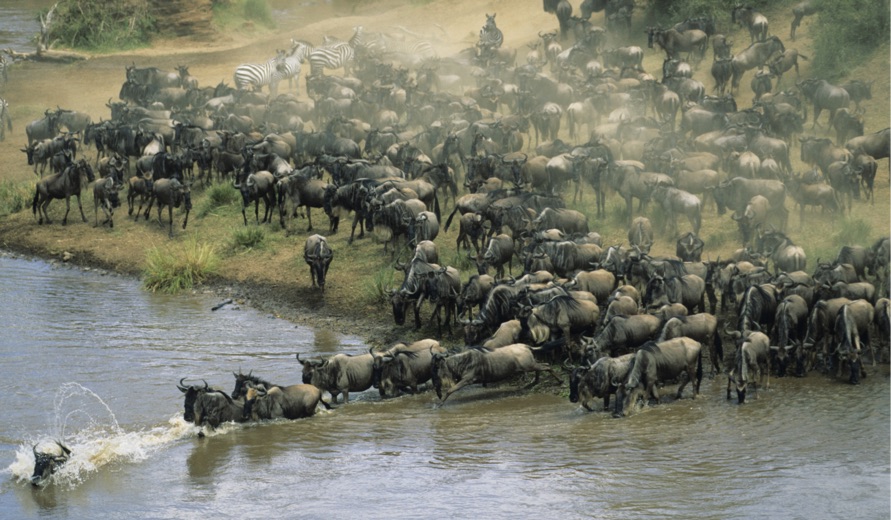

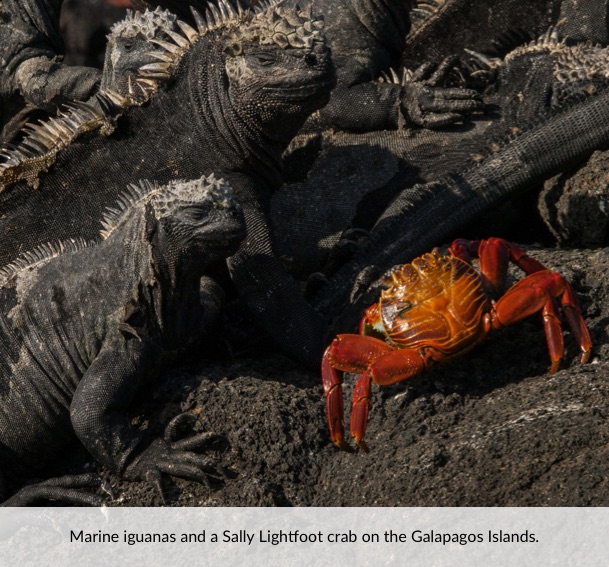
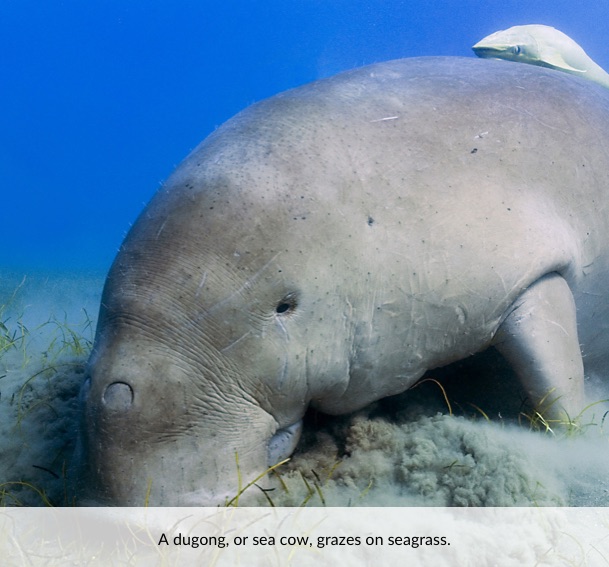
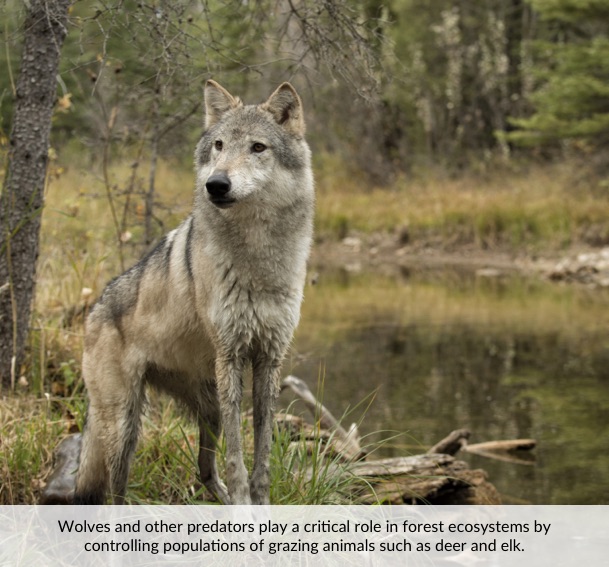
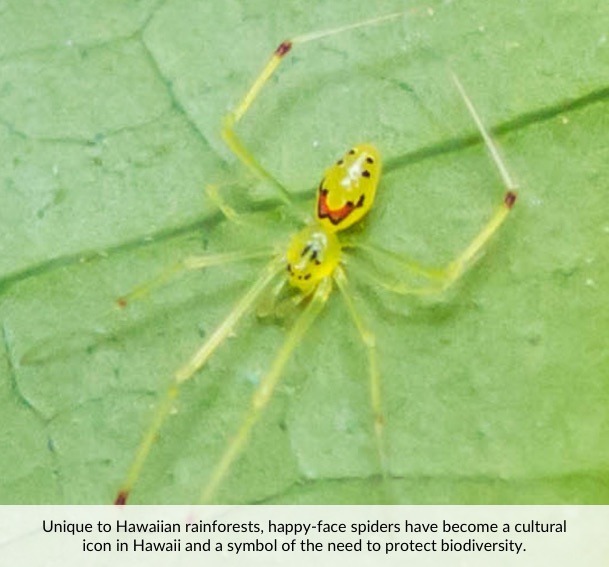



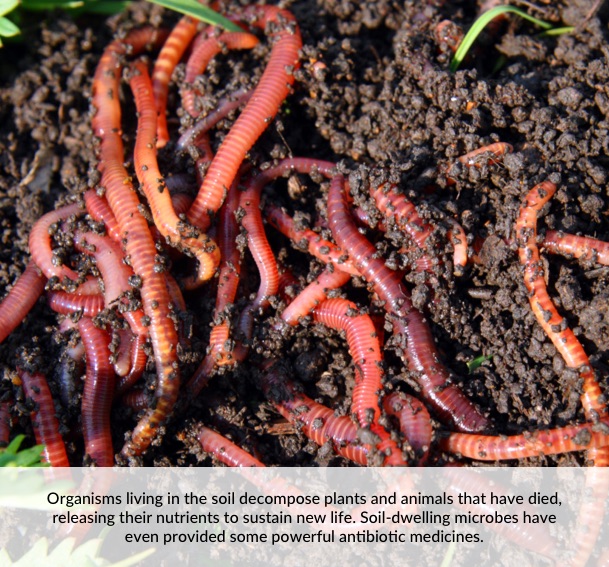
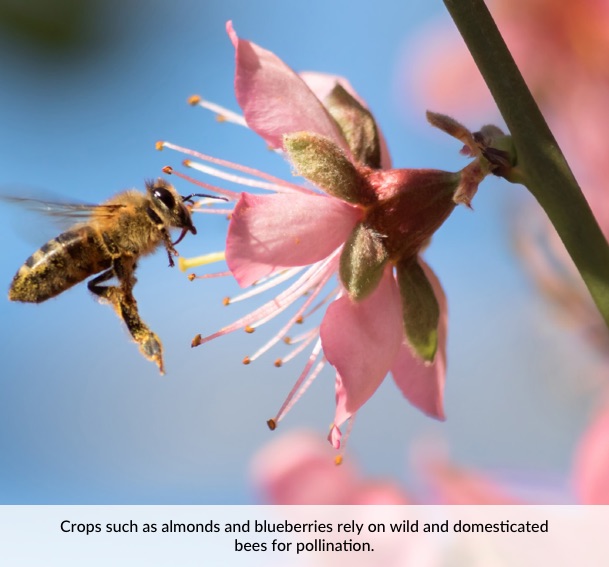

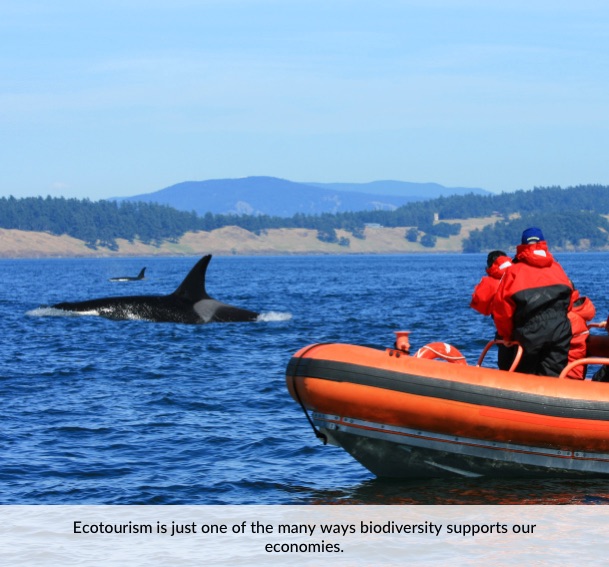

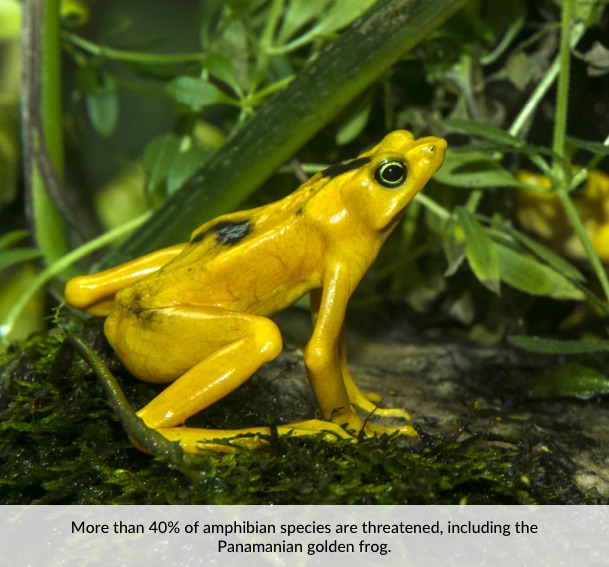

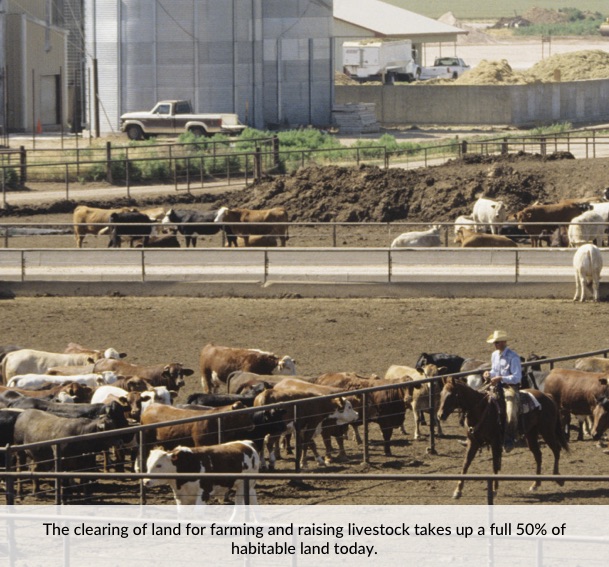
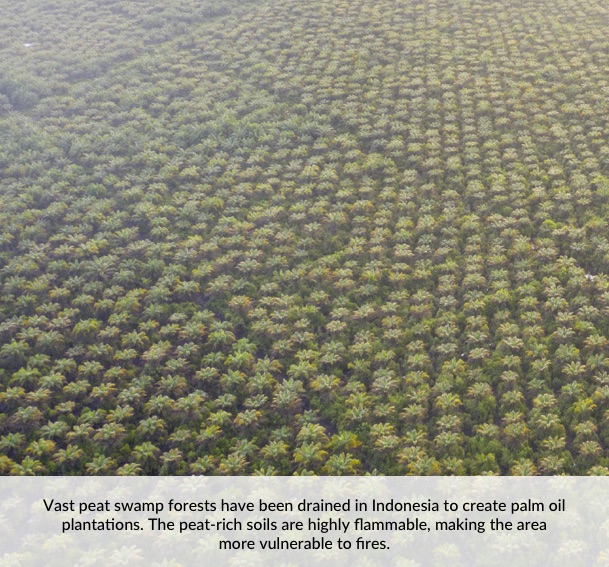

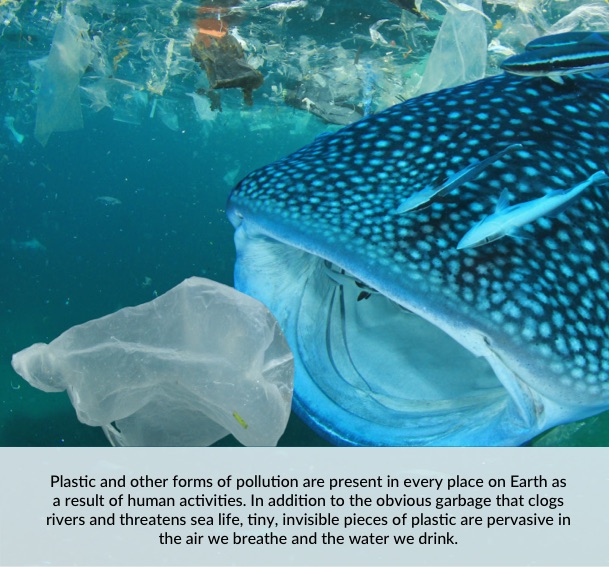





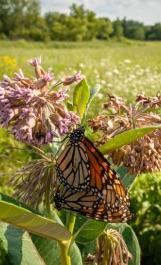 Numbering in the tens of millions as recently as the 1980s, some monarch butterfly populations have recently declined steeply,85 landing them on the endangered species list in December 2020. Habitat loss, urbanization, climate change, and the aggressive use of weed control that has destroyed the milkweed plants on which monarchs lay their eggs are all thought to have played a part. Stemming this historic decline requires far more than individual effort. In April 2020, the U.S. Fish & Wildlife Service and the University of Illinois Chicago signed an agreement to encourage energy and transportation companies to create habitat for monarchs along the public and private lands they administer. More than 45 companies in the energy and transportation sectors signed up for the program.
Numbering in the tens of millions as recently as the 1980s, some monarch butterfly populations have recently declined steeply,85 landing them on the endangered species list in December 2020. Habitat loss, urbanization, climate change, and the aggressive use of weed control that has destroyed the milkweed plants on which monarchs lay their eggs are all thought to have played a part. Stemming this historic decline requires far more than individual effort. In April 2020, the U.S. Fish & Wildlife Service and the University of Illinois Chicago signed an agreement to encourage energy and transportation companies to create habitat for monarchs along the public and private lands they administer. More than 45 companies in the energy and transportation sectors signed up for the program. 
